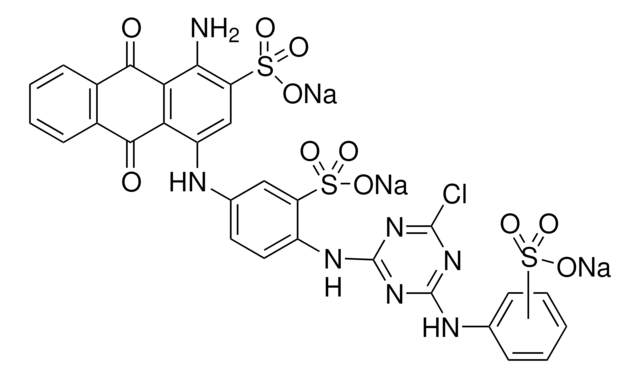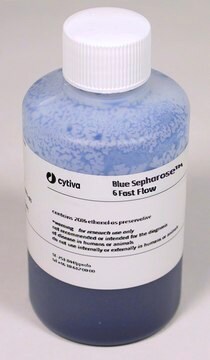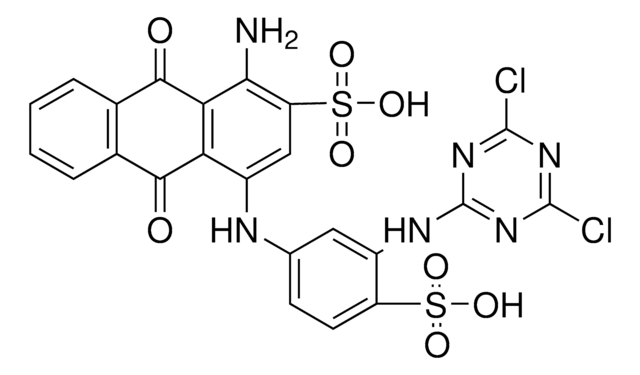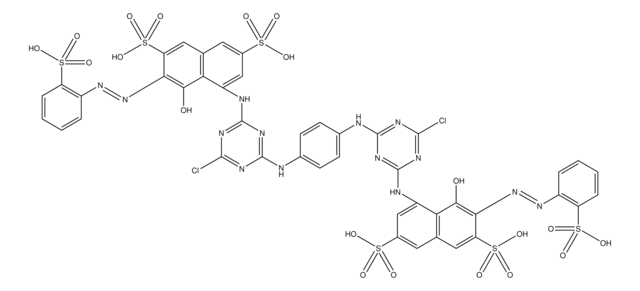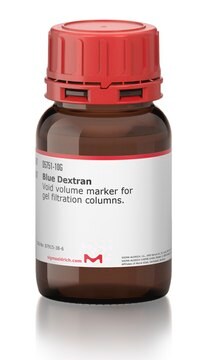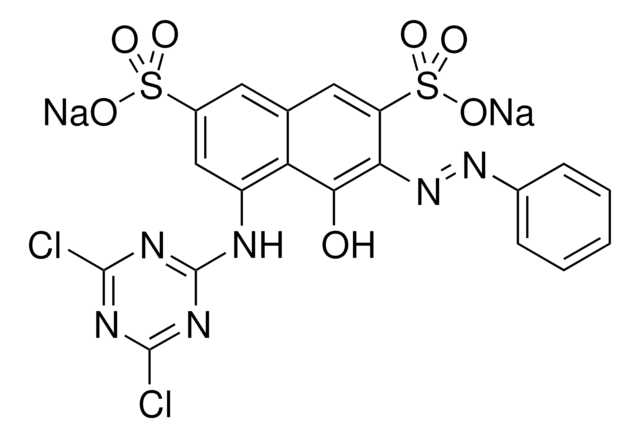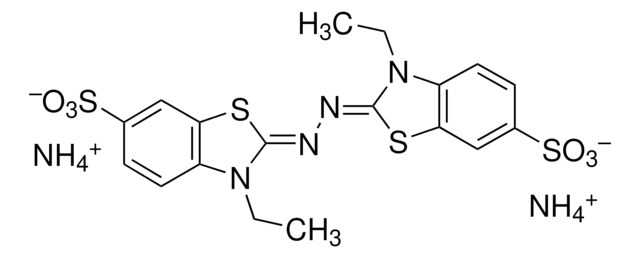B1064
Cibacron Blue 3G-A
Dye content ≥55 %, Powder
Synonym(e):
Cibacron Blue; 1-amino-4-[4-[[4-chloro-6-(2-sulfoanilino)-1,3,5-triazin-2-yl]amino]-3-sulfoanilino]-9,10-dioxoanthracene-2-sulfonic acid
About This Item
Empfohlene Produkte
product name
Cibacron Blue 3G-A, Dye content ≥55 %
Form
powder
Zusammensetzung
Dye content, ≥55%
Farbe
dark blue
Löslichkeit
H2O: 10 mg/mL, blue
Anwendung(en)
diagnostic assay manufacturing
hematology
histology
Lagertemp.
room temp
SMILES String
Nc1c(cc(Nc2ccc(Nc3nc(Cl)nc(Nc4ccccc4S(O)(=O)=O)n3)c(c2)S(O)(=O)=O)c5C(=O)c6ccccc6C(=O)c15)S(O)(=O)=O
InChI
1S/C29H20ClN7O11S3/c30-27-35-28(33-16-7-3-4-8-19(16)49(40,41)42)37-29(36-27)34-17-10-9-13(11-20(17)50(43,44)45)32-18-12-21(51(46,47)48)24(31)23-22(18)25(38)14-5-1-2-6-15(14)26(23)39/h1-12,32H,31H2,(H,40,41,42)(H,43,44,45)(H,46,47,48)(H2,33,34,35,36,37)
InChIKey
YKCWQPZFAFZLBI-UHFFFAOYSA-N
Suchen Sie nach ähnlichen Produkten? Aufrufen Leitfaden zum Produktvergleich
Anwendung
Biochem./physiol. Wirkung
Lagerklassenschlüssel
11 - Combustible Solids
WGK
WGK 3
Flammpunkt (°F)
Not applicable
Flammpunkt (°C)
Not applicable
Analysenzertifikate (COA)
Suchen Sie nach Analysenzertifikate (COA), indem Sie die Lot-/Chargennummer des Produkts eingeben. Lot- und Chargennummern sind auf dem Produktetikett hinter den Wörtern ‘Lot’ oder ‘Batch’ (Lot oder Charge) zu finden.
Besitzen Sie dieses Produkt bereits?
In der Dokumentenbibliothek finden Sie die Dokumentation zu den Produkten, die Sie kürzlich erworben haben.
Unser Team von Wissenschaftlern verfügt über Erfahrung in allen Forschungsbereichen einschließlich Life Science, Materialwissenschaften, chemischer Synthese, Chromatographie, Analytik und vielen mehr..
Setzen Sie sich mit dem technischen Dienst in Verbindung.